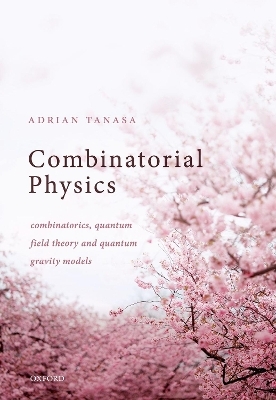
Combinatorial Physics
Oxford University Press (Verlag)
978-0-19-289549-3 (ISBN)
The interplay between combinatorics and theoretical physics is a recent trend which appears to us as particularly natural, since the unfolding of new ideas in physics is often tied to the development of combinatorial methods, and, conversely, problems in combinatorics have been successfully tackled using methods inspired by theoretical physics. We can thus speak nowadays of an emerging domain of Combinatorial Physics.
The interference between these two disciplines is moreover an interference of multiple facets. Its best known manifestation (both to combinatorialists and theoretical physicists) has so far been the one between combinatorics and statistical physics, as statistical physics relies on an accurate counting of the various states or configurations of a physical system.
But combinatorics and theoretical physics interact in various other ways. This book is mainly dedicated to the interactions of combinatorics (algebraic, enumerative, analytic) with (commutative and non-commutative) quantum field theory and tensor models, the latter being seen as a quantum field theoretical generalisation of matrix models.
Between 2010 and 2015, Adrian Tanasa was an Associate Professor at Paris North University. In September 2015, he became a Full Professor at Bordeaux University. He is the founder of the journal "Annals of the Institut Henri Poincaré D, Combinatorics, Physics and their Interactions".
1: Introduction
2: Graphs, maps and polynomials
3: Quantum field theory (QFT)
4: Tree weights and renormalization in QFT
5: Combinatorial QFT and the Jacobian Conjecture
6: Fermionic QFT, Grassmann calculus and combinatorics
7: Analytic combinatorics and QFT
8: Algebraic combinatorics and QFT
9: QFT on the non-commutative Moyal space and combinatorics
10: Quantum gravity, Group Field Theory and combinatorics
11: From random matrices to random tensors
12: Random tensor models - the U(N)D-invariant model
13: Random tensor models - the multi-orientable (MO) model
14: Random tensor models - the O(N)3 invariant model
15: The Sachdev-Ye-Kitaev holographic model
16: SYK-like tensor models
Appendix
A: Examples of tree weights
B: Renormalization of the Grosse-Wulkenhaar model, one-loop examples
C: The B+ operator in Moyal QFT, two-loop examples
D: Explicit examples of GFT tensor Feynman integral computations
E: Coherent states of SU(2)
F: Proof of the double scaling limit of the U(N)D??invariant tensor model
G: Proof of Theorem 15.3.2
H: Proof of Theorem 16.1.1
J: Summary of results on the diagrammatics of the coloured SYK model and of the Gurau-Witten model
Bibliography
| Erscheinungsdatum | 23.06.2021 |
|---|---|
| Zusatzinfo | Graphs and line drawings |
| Verlagsort | Oxford |
| Sprache | englisch |
| Maße | 180 x 255 mm |
| Gewicht | 932 g |
| Themenwelt | Mathematik / Informatik ► Informatik ► Theorie / Studium |
| Mathematik / Informatik ► Mathematik ► Graphentheorie | |
| Naturwissenschaften ► Physik / Astronomie | |
| ISBN-10 | 0-19-289549-4 / 0192895494 |
| ISBN-13 | 978-0-19-289549-3 / 9780192895493 |
| Zustand | Neuware |
| Haben Sie eine Frage zum Produkt? |
aus dem Bereich


